Better to Wear
We get dressed each and every day: clothes protect us and help us express ourselves. We can dress better when we re-design the whole textile process from manufacturing to use to recycling.
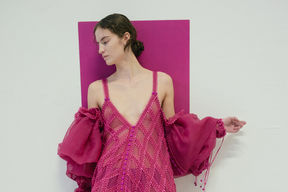
Exhibitors: Sofia Ilmonen, Hanna Herva, Sini Saavala, Noora Ainasoja & Henna Lampinen, Structural Colour Studio X Anna Semi, Ingvill Fossheim, SEE (Elina Onkinen & Kasia Gorniak) & FINIX, Marimekko & Natural Indigo
In collaboration with FINIX, BioColour and FinnCERES projects, Marimekko and students from Fashion, Clothing and Textile Design MA programme.
Curation: Kirsi Niinimäki
Exhibition design: Markus Koistinen & SEE
Funding: Academy of Finland
Acknowledgement: Voglia
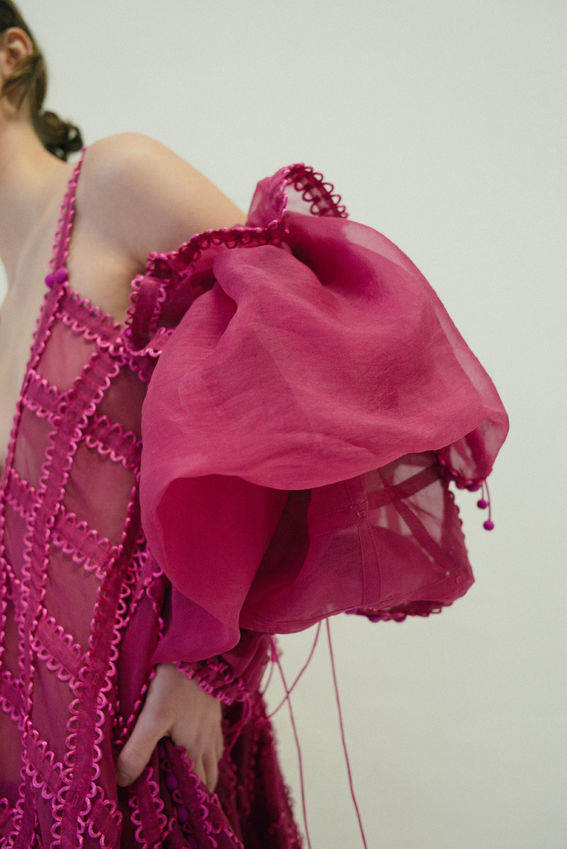
SOFIA ILMONEN
The collection addresses the problem of short garment lifecycles through a new modular design concept. Garments can be transformed, adapting to the changing needs and wants of the wearer. The ability to assemble and reassemble these modular garments entails a promise of fashion novelty and instills the potential of withstanding passing trends. Alongside product longevity, transformable clothing design has been proven to enable better person-product attachment and emotional durability, thanks to the wearer being able to participate in design decisions and the making of the garment. The fuchsia colour originates from natural dye cochineal.
Materials: Peace silk & organic cotton
Color: Cochineal & ready dye
Techniques: Modularity, natural dyeing, 3D printing
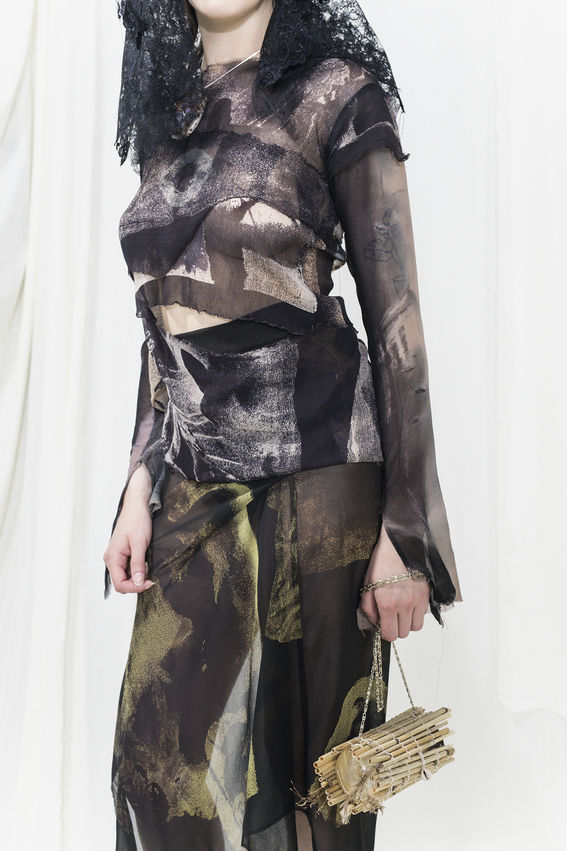
HANNA HERVA
The collection challenges fast-fashion’s hunger for new and mass-manufactured aesthetics. Herva constructs a unique design philosophy based on accidents and subsequent findings. Materials have been found or collected between the years 2017-2021 from the ground, friends, dumpsters, old collections and flea markets. Herva’s designs show how it is possible to create desirable garments when combining recycled materials with a strong design vision. The garments can be constantly updated, extending their lifecycle.
Materials: Found and re-purposed leather, feathers, polyester-cashmere/cotton yarn, tulle, glass beads, silk, reed, cotton jersey, denim
Techniques: Hand-painted fabrics, Reconstructed fashion
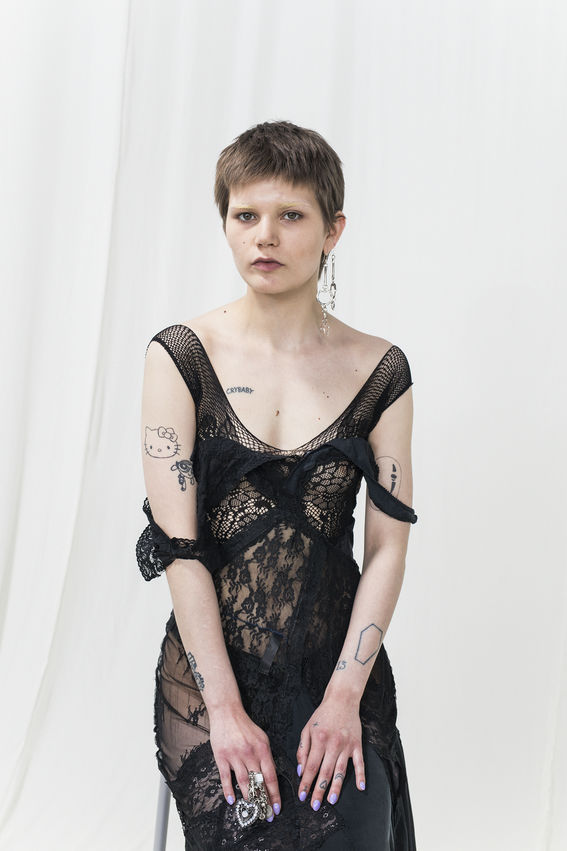
SINI SAAVALA
We have lost the understanding of dirt and stains. Only new and clean garments are accepted in a social context. We launder our garments much too frequently, often after just one wear, which increases the environmental impact during the use phase. There is a contradiction, because at the same time we design and produce clothes to look intentionally worn and distressed, even if brand new. How about if we accept the concept of old, dirty and stained garments and include these elements of patina in the design phase?
Materials: Found, mix
Colors: Mix
Technique: Reconstructed fashion
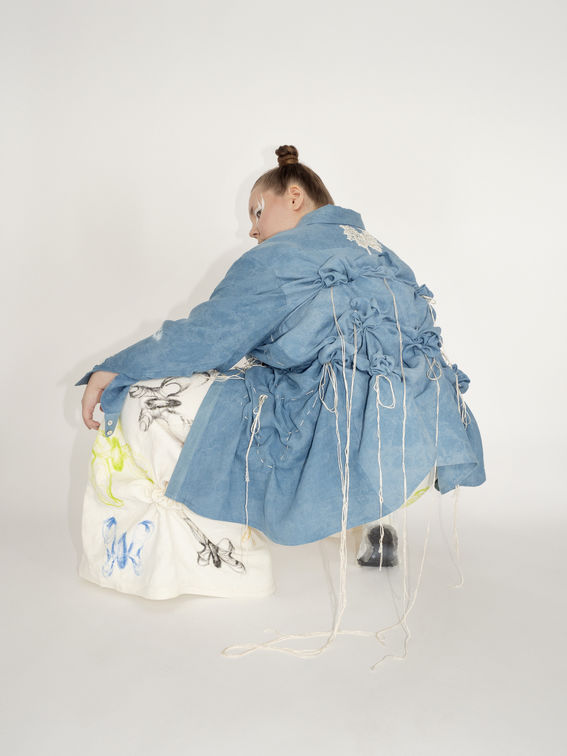
NOUR AINASOJA & HENNA LAMPINEN
Research Project: Biocolour
Conventional fashion suffers from a deep fatphobia. Sustainable fashion is the epitome of this phenomenon, where plus-sized consumers are ignored. The garments by Lampinen and Ainasoja include an integrated system for modification and the possibility to mend the garments creates space for the body’s natural changes. Materials are carefully selected according to their soil friendly qualities. In the natural dyeing process unnecessary toxic chemicals were left out.
Materials: Hemp, linen denim. Sari: Industrial waste silk yarn, silk yarn, second-hand yarn.
Colours: Pinecones, Woad Indigo, cochineal, onion, black tea.
Techniques: Sewing, embroidery, natural dyeing.
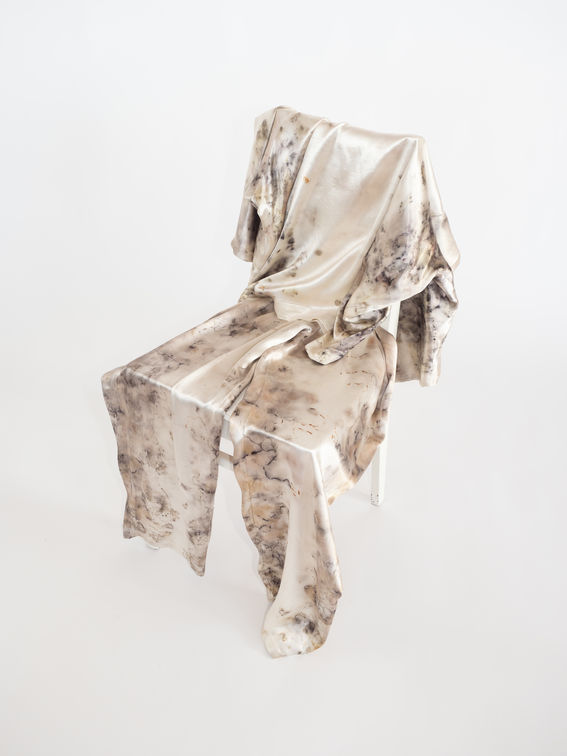
INGVILL FOSSHEIM
BioCostume: Experimental Costume Design with Biobased Co-Actants
Research Project: Biocolour
Fossheim’s project addresses current challenges relating to environmentally sustainable practices in design for performing arts. Colour impermanence can be an aesthetic feature in performing arts. The colour expression of these costumes balances between stable and unstable: during the lifecycle of the production these colours will slowly shift and change through interactions with the sweaty human bodies, onstage citrus fruits, light exposure, washing, and re-dyeing.
Part of the performance Void - A Psychodrama by choreographer Jenni-Elina von Bagh/Open-ended ry.
Materials: Viscose, cotton
Colours: Floral waste, avocado food waste (donated by Sushi’n’Roll), iron and salt.
Techniques: Experimental dyeing, sewing
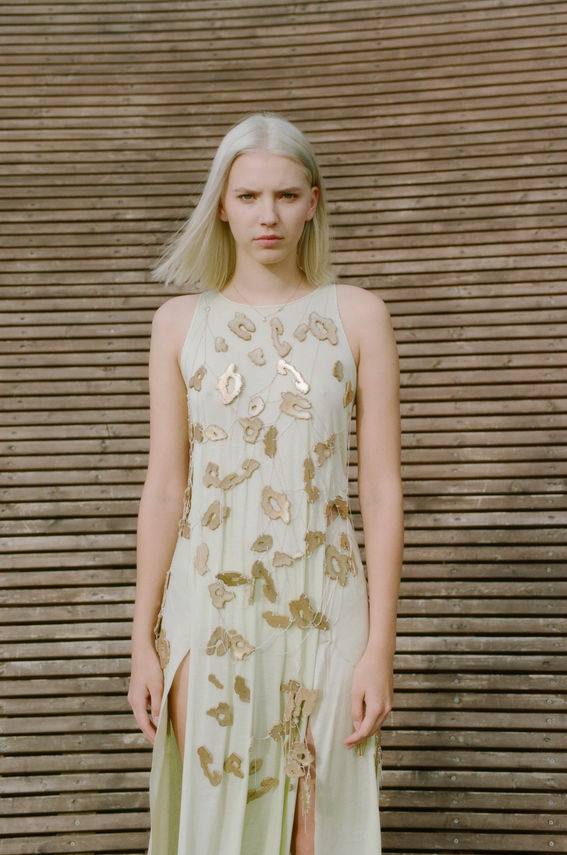
STRUCTURAL COLOUR STUDIO (Noora Yau & Konrad Klockars) X ANNA SEMI
Research Project: FinnCERES
Shimmering or glittering color effects are often produced by using plastic or metal based materials or even toxic chemicals. Shimmering wood is an alternative for these harmful pigments. It is produced 100% from wood. Structural Colour Studio has collaborated with fashion designer Anna Semi to investigate this shimmering wood effect in a fashion context.
Materials: Oak, viscose,
Color: Structural color, citrus
Techniques: Sewing, CNC-cutting
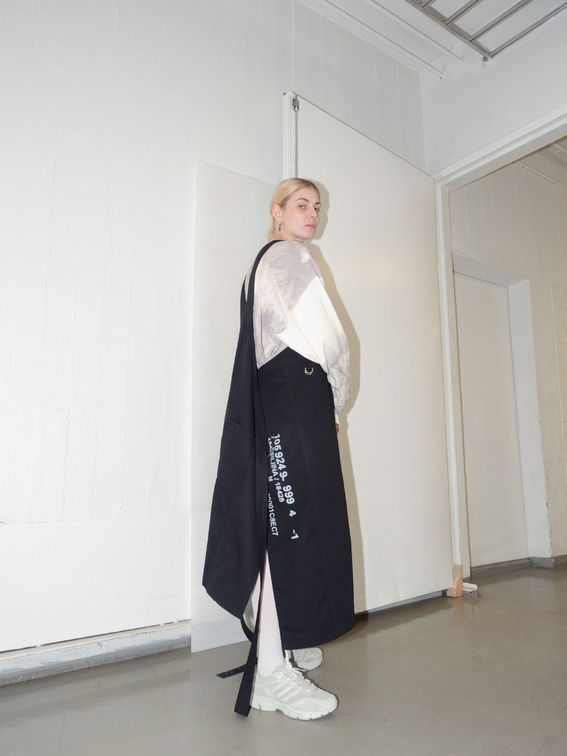
SEE (Elina Onkinen & Kasia Gorniak)
Research Project: FINIX
Sustainability in the fashion sector means extending the use-time of garments, repairing and re-designing them, updating their appearance and even re-constructing them, repeatedly. At the end of their life we recycle them as waste material and regenerate new fibres from the waste. Designs by Onkinen and Gorniak look to the future, where circular economy and textile recycling are everyday practice. Several lifecycles will be integrated into the garment, already at the design stage.
Materials: Recycled cotton/polyester workwear, donated by Lindström
Colours: Fireweed flowers, iron, reactive and disperse dyes.
Techniques: Reconstructed fashion, over-dyeing, natural dyeing, screen-printing.
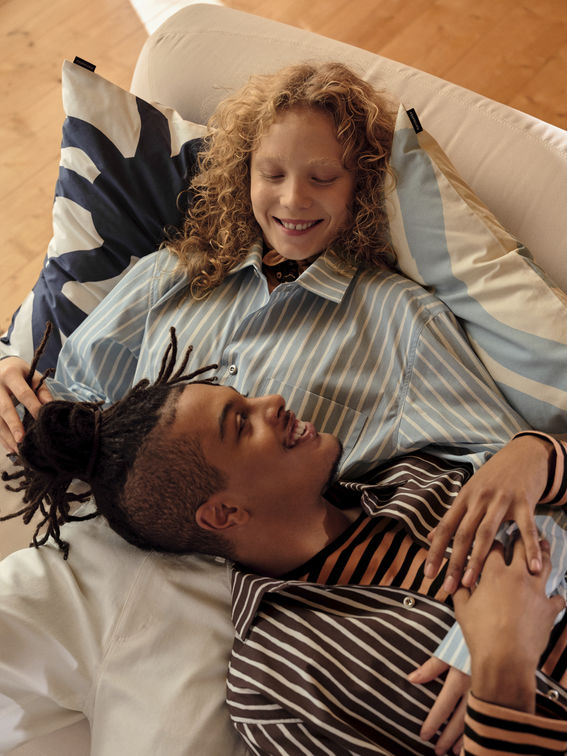
MARIMEKKO & NATURAL INDIGO
Marimekko has collaborated with Natural Indigo Finland in the use of natural indigo blue colouring originating from the Woad plant, cultivated in Finland. Part of the Autumn 2021 collection, the garments and bags are industrially printed at Marimekko’s Herttoniemi factory. These products show that fashion can be produced more locally, more sustainability and more transparently, important elements for building an understanding of what sustainable fashion will be in the future.
Materials: Cotton
Color: Woad Indigo
Technique: Industrial printing
The event is a part of Helsinki Design Week’s official festival programme and Year of Research-Based Knowledge. Aalto University is one of the EU's New European Bauhaus partners.
#ACoolerPlanet #HelsinkiDesignWeek #NewEuropeanBauhaus #tttv21

We get dressed each and every day: clothes protect us and help us express ourselves. We can dress better when we re-design the whole textile process from manufacturing to use to recycling.
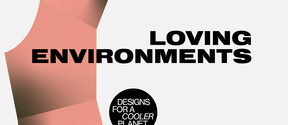
Construction gobbles up half of the world’s natural resources. Collaboration between scientists, designers, architects, the public sector and companies generates ideas that can make living environments and the construction industry more sustainable.

We need to radically cut our consumption of materials and energy by creating materials that are not just renewable but forever reusable.
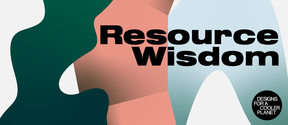
What is wise to design for future generations in a world of plenty?